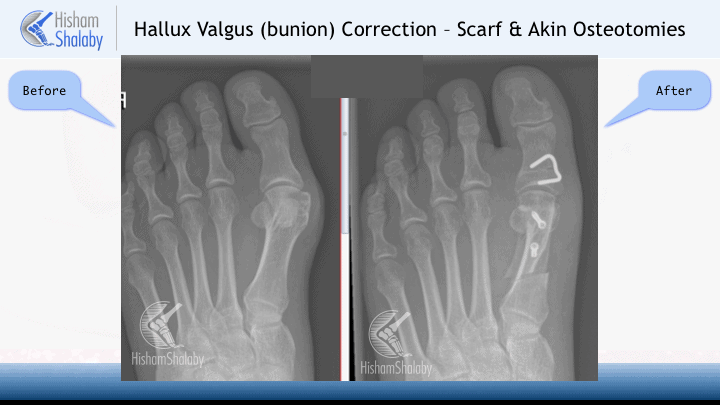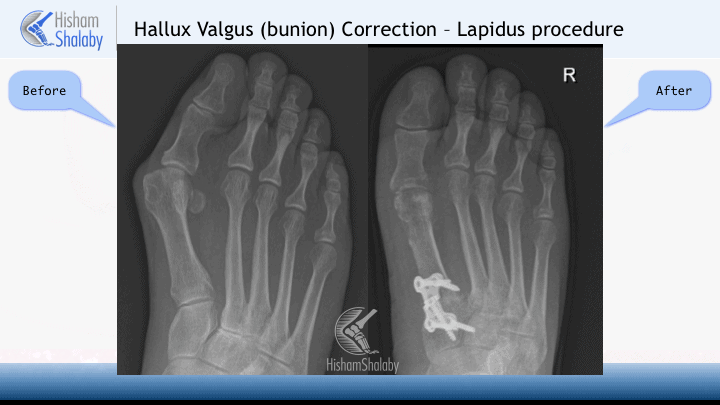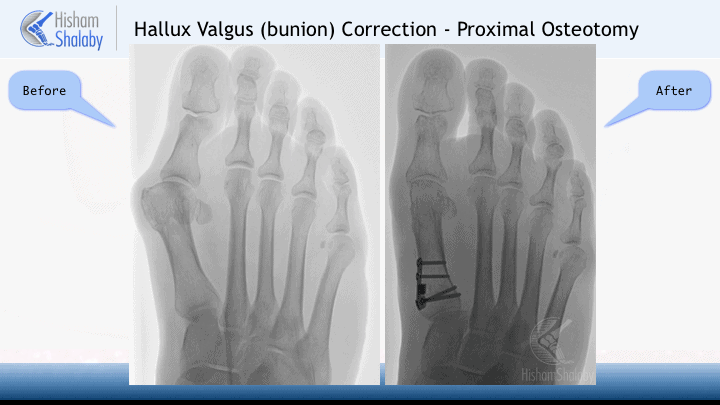How is the Bunion corrected surgically?
The operation performed is called the “Scarf & Akin osteotomies”
Why do you need this operation?
Before being offered this operation, you should have tried other measures such as using wide-box shoe-wear, padding the swelling and maybe trying forefoot insoles.
This operation is offered to you if you continue to have symptoms despite trying the above measures and after you have been examined and counselled.
What does the operation involve?
The operation is done as a day case, but come prepared in case you need to stay overnight.
The operation is performed with general anaesthetic and nerve block (which means numbing the nerves of the foot).
The operation involves two incisions. One is in the first web space to do a soft-tissue release of the structures that pull the toe to the deformed position. The second is a medial incision that is used to trim the bunion and to perform a break in the foot bone called “The Scarf osteotomy”. Another break in the toe itself called “The Akin osteotomy” is usually also performed.
These two breaks (or osteotomies) are used to set the toe straight. A medial soft-tissue tightening is also performed.
You will use crutches if needed as well as a surgical shoe “the off-loading shoe”.

Your post-operative period
- You must keep your foot raised for the first two weeks and if needed afterwards
- You can put your full weight on your foot using the surgical shoe for the first 6 weeks
- Use crutches if needed
- Exercise big toe movements at two weeks
- The swelling may last for up to six months.
Your follow-up
- At two weeks, the dressing is reduced and the stitches are removed
- At 6 weeks, you have a follow-up with x-rays
- Off work for 2 to six weeks depending on your job
- No driving for six weeks.
What are the possible complications?
- Infection
- Sensitive or painful scar
- Big toe permanent numbness
- Joint stiffness
- Under-correction or Over-correction
- Failure of bone healing (non-union)
- Recurrence of the deformity
- Avascular Necrosis of metatarsal head
- Clots in the leg (DVT)
- Clots in the lung (PE)
- Chronic Regional Pain Syndrome
Smoking, diabetes, rheumatoid arthritis or being on steroids or blood thinning medication increases possible risks significantly.
Different techniques for Hallux valgus correction include:
Lapidus Procedure:

1st Metatarsal Proximal Osteotomy

For information on the Minimally Invasive correction technique click here.
